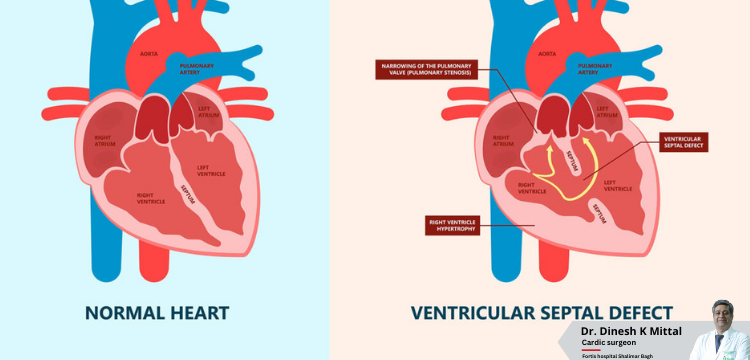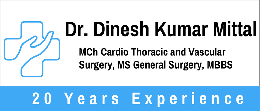Can Pediatric VSD Closure Prevent Future Heart Complications?

Pediatric Ventricular Septal Defects (VSDs) are common heart problems in children with unusual holes between heart chambers. These holes can cause serious issues if not fixed. The question is: can fixing these holes prevent future heart problems?
Statistics show that thousands of babies are born with VSDs every year. If left untreated, these holes can cause heart failure, breathing problems, and infections. But when doctors close these holes, it helps the heart work better, reduces strain, and stops complications. Fixing VSDs is vital to prevent further heart issues, giving children a better chance at a healthy life without worrying about severe heart problems.
This blog investigates whether fixing a hole in a child’s heart can stop future heart problems, exploring how well it works and its importance in preventing heart complications.
What Is a Pediatric VSD?
A pediatric VSD stands for “Pediatric Ventricular Septal Defect,” a congenital heart condition found in children. It involves an abnormal opening between the heart’s ventricles, impacting blood flow. This defect can cause symptoms like murmurs or fatigue, affecting the child’s growth and health.
What Happens If Pediatric VSDs Are Left Untreated?
Untreated VSDs can lead to various heart-related complications, impacting the child’s health in the long term:
- Heart Failure: Larger VSDs may cause excessive strain on the heart, leading to heart failure—a condition where the heart can’t pump blood effectively.
- Pulmonary Hypertension: Prolonged shunting of blood through the VSD can lead to increased pressure in the pulmonary arteries, affecting lung function and causing pulmonary hypertension.
- Endocarditis: Children with VSDs risk developing endocarditis, an infection of the heart’s inner lining caused by bacteria entering the bloodstream.
- Growth and Development Issues: Severe VSDs can hinder a child’s growth and development due to inadequate oxygen supply to the body.
What is the Role of VSD Closure?
VSD closure is a fundamental treatment approach to address the defect and its associated complications. The primary objective of closure is to prevent the complications mentioned above and enhance the child’s heart health.
- Restoring Normal Blood Flow: Closure aims to normalize blood flow between the heart chambers, preventing the shunting of blood from the left ventricle to the right ventricle.
- Reducing Strain on the Heart: By closing the VSD, the heart’s workload decreases, preventing strain and reducing the risk of heart failure.
- Preventing Pulmonary Hypertension: Closure helps prevent the development or progression of pulmonary hypertension by maintaining proper blood flow.
- Lowering Risk of Endocarditis: Eliminating the abnormal pathway between the ventricles decreases the likelihood of bacterial infection leading to endocarditis.
Dr. Dinesh Kumar Mittal has performed 7000+ heart surgeries for adults and kids. His expertise lies in fixing heart problems in children, like Pediatric Ventricular Septal Defects (VSD). His experience shows he’s an expert in caring for kids with heart issues, ensuring they get the proper treatment they need.
What Is the Cost Of Pediatric VSD Closure in Delhi?
Pediatric VSD closure treatment in Delhi costs around Rs. 2,60,000 on average, with prices ranging from Rs. 1,90,000 to Rs. 3,90,000. In terms of USD, it is USD 4,900 to USD 5,500. These expenses vary depending on criteria such as hospital facilities, the surgeon’s expertise, the severity of the problem, other medical demands, and after-care. As a result, individual instances and hospital expenses impact the overall cost.
What is the Effectiveness of VSD Closure in Preventing Complications?
Numerous studies and medical observations have demonstrated the effectiveness of VSD closure in preventing future heart complications in affected children:
- Improved Cardiac Function: Closure significantly improves cardiac function, allowing the heart to pump blood more efficiently and reducing the risk of heart failure.
- Reduced Risk of Pulmonary Hypertension: Early closure minimizes the risk of developing pulmonary hypertension or slows its progression, benefiting the child’s lung health.
- Lower Incidence of Endocarditis: Successful closure lowers the risk of bacterial infections, reducing the likelihood of endocarditis.
- Enhanced Growth and Development: Closure improves oxygenation, supporting the child’s growth and development.
Will Fixing Pediatric VSDs Avoid Future Heart Problems?
Dr. Mittal says, “Closing these heart defects helps prevent complications like heart failure, lung problems, and infections. Closing the abnormal openings between the heart chambers normalizes blood flow, reducing the chances of future cardiac issues. Repairing these defects in children significantly lowers the risk of developing heart-related complications later in life.”
“Early intervention through closure procedures alleviates symptoms and ensures healthier heart function as the child grows. It’s a crucial step towards averting potential heart problems, enhancing the child’s quality of life, and reducing the need for further heart-related treatments,” adds Dr. Mittal.
What are the Factors Influencing Preventative Outcomes?
Several factors impact the success of VSD closure in preventing future complications:
- Timeliness of Intervention: Early closure during infancy or childhood often leads to better outcomes and fewer complications.
- Size and Location of the Defect: The size and location of the VSD determine the complexity of closure and may influence long-term outcomes.
- Associated Cardiac Issues: Additional heart defects or complications related to VSDs might affect the success of closure and post-operative recovery.
Shivam Dixit shared his immense satisfaction, highlighting Dr. Dinesh Kumar Mittal’s exceptional care. When my daughter urgently needed surgery due to a major heart defect, meeting Dr. Mittal brought immense reassurance. The doctor and his team performed the surgery incredibly well. My daughter is now safe and healthy, thanks to Dr. Mittal’s expertise. I’m happy with the outcome and highly recommend him to anyone seeking heart-related treatment.
Conclusion
Pediatric VSD Closure is a crucial intervention in preventing future heart complications associated with congenital disabilities. It plays a pivotal role in restoring normal cardiac function, reducing strain on the heart, and minimizing the risk of various complications, including heart failure, pulmonary hypertension, and endocarditis. Early diagnosis and timely intervention significantly contribute to successful closure, underscoring the importance of monitoring and appropriate management for children with VSDs. Ultimately, VSD closure is a cornerstone in promoting better heart health and improving the quality of life for affected children.
FAQs
1. Is Pediatric VSD Closure a Risky Procedure?
Pediatric VSD Closure is generally safe but carries some risks, like any surgery. Consult with a pediatric cardiologist for a better understanding of potential risks.
2. Can All Pediatric VSDs Be Closed Without Surgery?
Not all VSDs need surgery. Some small or moderate VSDs might close independently or can be managed with medications. A cardiologist determines the best approach.
3. Are There Long-term Complications After Pediatric VSD Closure?
While rare, long-term complications like residual leaks, irregular heart rhythms, or valve problems can occur. Regular follow-ups help monitor and manage such issues.
4. How Soon Can Children Resume Normal Activities After VSD Closure?
Recovery varies, but children can resume light activities within a few weeks. Strenuous activities may need to wait for a few months post-surgery.
5. Is Pediatric VSD Closure Covered by Insurance?
Most health insurance plans cover pediatric VSD closure. However, coverage specifics may vary, so you should check with your insurance provider beforehand.
